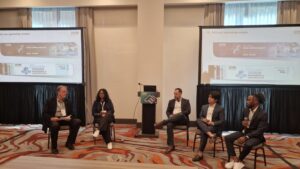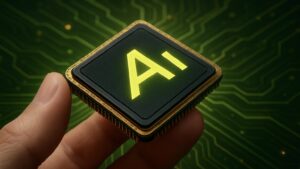Data centers are undergoing unprecedented transformation driven by artificial intelligence technologies. Next-generation AI systems’ power demands have posed extraordinary infrastructure challenges that traditional facility designs cannot address. With processing components generating extreme heat densities and continuous, clean power delivery, AI environments today require a fundamentally different approach to electrical infrastructure. Organizations deploying AI workloads must address complex power considerations. This is while maintaining reliability standards and rising sustainability requirements. This article addresses critical electrical infrastructure planning requirements of next-generation AI-ready data centers. It focuses on key considerations in capacity planning, distribution designs, and green power integration strategies.
Electrical Planning for AI-Ready Data Centers: Power Capacity Planning for AI Workloads
AI data center’s electrical infrastructure planning begins with accurate capacity forecasting. It should take into account both short-term and long-term power requirements. This sub-section addresses key power planning methodologies from utility-level feeds to rack-level distribution:
Forecasting Future AI Power Requirements
Effective AI infrastructure planning starts with comprehensive power modeling, incorporating workload growth projections. Furthermore, early coordination with utility providers is essential since securing additional grid capacity often comes with multi-year lead times. Moreover, businesses need to analyze their respective AI app profiles, considering both training and inference workloads, for actual versus theoretical maximums. This analysis should incorporate capacity planning tools that simulate various computational loads for various AI frameworks. It helps to identify the right baseline needs and growth trends.
High-Density Power Architecture Implications
Conventional power architectures for data centers tend to accommodate 5- 15 kW/rack power, yet most AI clusters have a power density requirement of 50- 100 kW. Such a rise necessitates a complete overhaul of power delivery systems. Furthermore, infrastructure teams need to take into account UPS topologies that can handle such loads effectively, and in several cases, they use modular designs that can be scaled up incrementally. Moreover, power distribution strategies can shift from traditional raised floor installations to overhead busway systems with higher amperage delivery to smaller compute areas. Efficient high-density deployments also include careful planning of cooling capacity against areas of power density.
Utility-Scale Connection and Substation Requirements
AI-ready data centers tend to require single-utility substations. It usually scales to 100+ MW of total capacity. Accomplishing this quality of service requires planning with energy companies and regional transmission authorities. Site selection must ensure proximity to solid transmission lines, ideally with redundant grid paths from multiple substations. Furthermore, many firms today pursue phased construction of electrical infrastructure. So, they install initial capacity and secure rights and paths available for additional expansion. Proper substation design should also incorporate smart switchgear that supports future capacity growth without service interruptions.
Rack-Level Power Distribution Evolution
At the rack level, AI deployments are encouraging the adoption of higher voltage distribution systems. These improve efficiency and reduce copper requirements. Furthermore, most facilities are shifting away from traditional 208V single-phase to 415V three-phase power delivered directly to racks. Power distribution units are also evolving to support smart load balancing and phase monitoring capabilities. These are critical to high-density AI use cases. In addition, contemporary PDUs feature per-outlet power metering and remote switching capabilities. This enables granular power management and greater operational insight for computationally intensive workloads.
Power Infrastructure Design for AI Workloads: Resilient Distribution Architectures
The computational intensity of AI workloads demands a very robust power distribution infrastructure to prevent expensive downtime. This section describes key techniques for designing fault-tolerant electric infrastructure capable of handling mission-critical AI workloads:
Dynamic Load Balancing Systems
These systems monitor and rebalance power among AI clusters in real-time. It prevents localized overloads while maximizing infrastructure utilization. Furthermore, sophisticated deployment leverages machine learning algorithms to predict load shift based on patterns of application behavior, pre-emptively redirecting distribution. Moreover, integration with workload management software enables synchronized power and computational resource provisioning. Some facilities use power-sensitive scheduling that is capable of transferring non-essential AI workloads to align with windows of optimal power availability. It enables intelligent coordination between the electrical infrastructure and the computational process.
Harmonic Mitigation Strategies
High-frequency switching components in AI power supplies inject significant harmonics into the system. It reduces the power quality and efficiency of the system. Furthermore, modern AI-ready data centers employ active harmonic filters that respond dynamically to changing harmonic profiles characteristic of AI processing workloads. The judicious application of passive filter devices at points of distribution reduces propagation of harmonics within the facility. Moreover, premium UPS units feature harmonic compensation features that provide clean power to sensitive AI accelerators. This is without allowing distortion to be passed on to the upstream infrastructure. As a result, it ensures maximum component longevity and overall system reliability.
Transient Voltage Protection
AI systems using GPUs are extremely sensitive to voltage spikes that can pollute computational processes or ruin expensive hardware. In-depth use of transient voltage surge suppression (TVSS) at various levels of power distribution provides defense-in-depth protection. Furthermore, advanced power quality monitoring systems are implemented in facilities that can monitor microsecond-level voltage events for analysis and compensation. In addition, electronic circuit breakers with fast actuation times and programmable trip levels tailored to particular AI hardware vulnerability profiles are incorporated into coordinated protection schemes to offer specific responses to power quality issues.
Isolated Power Domains
Implementation of electrically isolated power domains in AI clusters reduces fault propagation risk and supports isolated maintenance with no facility-wide impacts. Further, facilities use maintenance bypasses with a static transfer switch to permit a single power path servicing while continuing critical operations. Moreover, power distribution systems leverage dynamic bus assignment functionality to reconfigure power paths on the fly to respond to changing operational demands without disrupting operation. In addition, incremental electrical infrastructure component upgrades without interfering with uninterrupted AI operations required for business continuity are facilitated through this approach.
Electrical Planning for AI-Ready Data Centers: Sustainable Energy Integration
AI operators are under growing pressure to offset the tremendous energy utilization of their loads by utilizing renewable means. This section addresses how AI-ready data centers’ electric infrastructure is made to include sustainable sources:
Carbon-Aware Power Routing
Using AI to schedule the workload according to the real-time carbon intensity of the grid makes usage during cleaner periods possible. Smart platforms that use future-emissions prediction integrate with scheduling priority levels of workload to drive deferrable processing in and out automatically at the best available moments. They require high-quality power distribution capabilities to dynamically ride through fluctuating power sources. Moreover, organisations employing carbon-smart routing typically develop hierarchical workload classification programs balancing computation criticality with the aim of sustainability. It maximizes AI operation when renewable energy is available.
Hydrogen Fuel Cell Integration
Advanced AI hubs are beginning to leverage hydrogen fuel cells as backup systems and secondary power sources. The systems deliver zero-emission operation when powered with green hydrogen but provide reliable power generation regardless of the weather conditions. Furthermore, strategic implementation entails local production of hydrogen using excess renewable energy during low-demand periods. Some companies are exploring tri-generation fuel cell configurations that simultaneously produce electricity, heat, and cooling for application in operations of AI-ready data centers. It helps to maximize overall system efficiency through multiple means to reduce the carbon footprint.
Dynamic Power Capping Technologies
Next-generation power management systems utilize dynamic power capping across AI clusters based on the availability of renewable energy. These systems dynamically balance compute resources to map to sustainable generation profiles without disrupting mission-critical workloads. Furthermore, implementation requires sophisticated APIs between power management and workload orchestration platforms. Moreover, the most sophisticated deployments use predictive algorithms that forecast renewable generation troughs, pre-emptively redistributing workloads to maintain critical processes. This is while reducing power consumption during anticipated low-generation periods. So, this fosters a symbiotic relationship between computation and available sustainable power.
Distributed Clean Energy Aggregation
Firms are developing energy aggregation methods that combine multiple distributed clean energy resources into virtual power plants. These systems align generations across several geographic locations to provide a more resilient renewable source. Moreover, more sophisticated implementations incorporate shared energy storage resources that serve many AI facilities while providing grid-stabilizing services. Additionally, some operators of AI-ready data centers form energy cooperatives with neighboring facilities so they can invest in and cooperate on renewable generation assets. So, this maximizes sustainable use of resources and allocates capital expenditures across multiple stakeholders.
To Sum Up
Planning electrical infrastructure for AI-ready data centers requires a comprehensive approach that balances enormous power requirements with reliability and sustainability objectives. Businesses must develop sophisticated capacity planning techniques while embracing resilient distribution architectures capable of supporting record rack densities. The integration of renewable energy solutions further offers key paths to sustainable AI operations.
Discover cutting-edge solutions for data centers like energy-efficient construction & design, waterless cooling, thermal energy storage, and more by attending the 3rd U.S. Data Center Summit on Construction, Energy & Advanced Cooling on May 19-20, 2025, in Reston, VA. The summit brings together data center experts to share some rare insights, case studies, and much more, along with insane networking opportunities. Register now!


